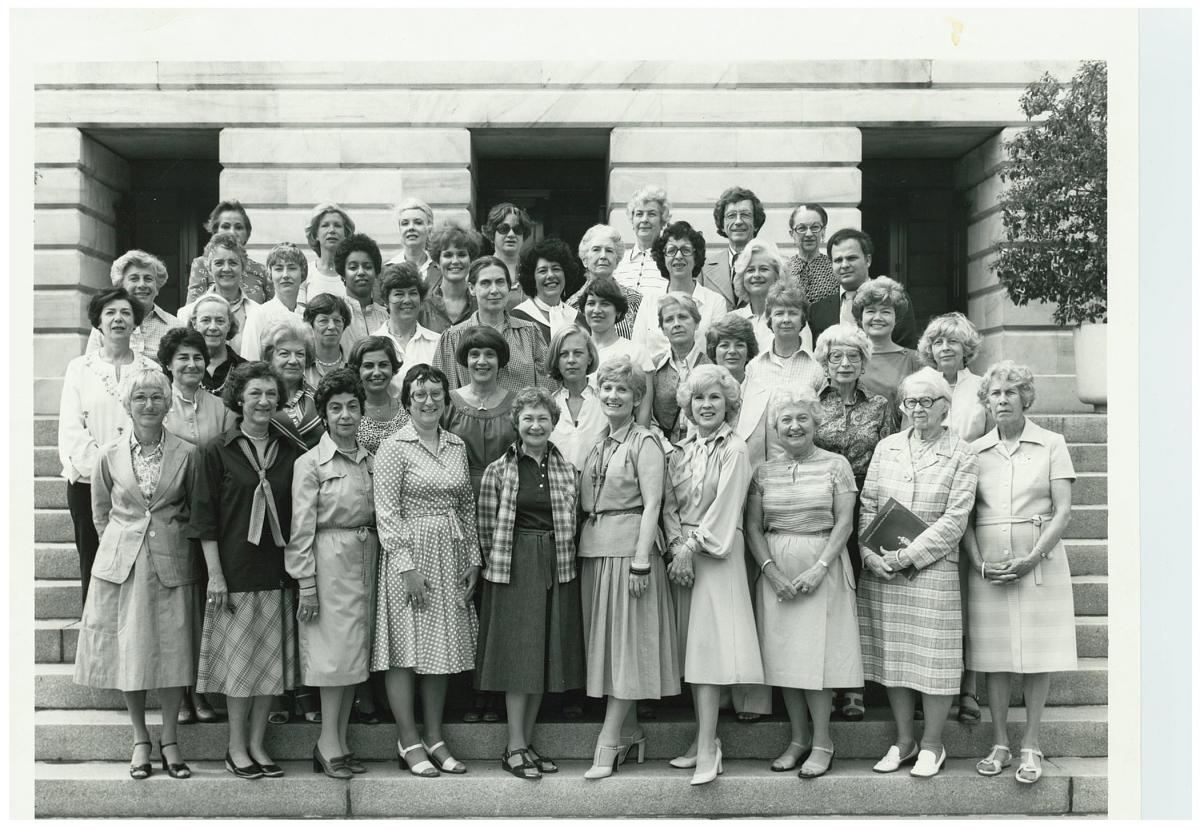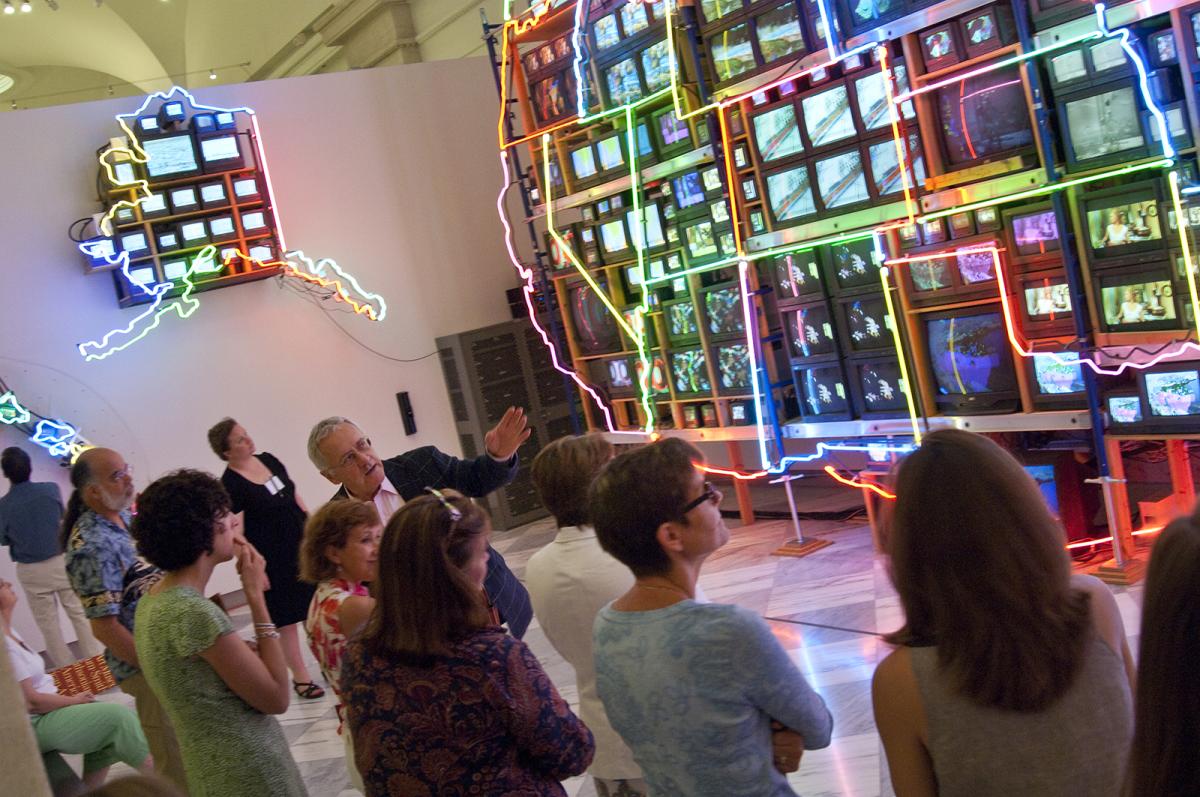
Think back to the last time you had a truly great experience on a guided tour of a museum or historic site. No matter where you were and what you learned that day, you probably remember the guide who connected you with the material in a meaningful way. Maybe they asked intriguing questions that made you see something in a different light, or shared their own enthusiasm for the subject matter in a way that was infectious. SAAM’s own corps of volunteer docents has an illustrious history of creating these kinds of eye-opening experiences for visitors, and this year marks their 50th anniversary. But while we know the positive impact our docents can have on the public, what does becoming a docent do for the volunteers themselves?
“Volunteering has changed my life, in that I have a new group of friends, and I look at things differently, in art museums and anywhere.” said Nancy LeBaron, docent class of 2011 in a recent oral history interview. Many of LeBaron’s colleagues echoed that sentiment in their own interviews. So what makes being a docent such a transformative experience for so many? Looking back on the program’s history tells a story of continual growth and evolution.
When SAAM (then the National Collection of Fine Arts), opened its doors to the public for the first time on May 3, 1968, a corps of 19 volunteer docents was ready to jump into service, giving tours to the Museum’s earliest visitors. Since that first day, SAAM’s docents have been bringing the collection to life for visitors of all ages by facilitating rich conversations, illuminating thematic links between artworks, and sharing a wealth of knowledge that could only be acquired from years of study.
“I have always considered it a privilege to volunteer here,” said Edmund Bronder, docent class of 2007. “To be able to come here, experience this art, and in some small way help to communicate my feelings about art and what I think it means … I don’t think I will ever lose that sense.”
While SAAM’s docents have never wavered from their dedication to sharing American art with the public, members of the original corps might be amazed to see the ways in which the docent program has expanded over the last half-century. From that original group of 19, all of whom were women, the corps has steadily grown, and currently includes 120 volunteers, both men and women. Docents now have a second building, the Renwick Gallery, to tour. Docent responsibilities have grown with technology to include interactive videoconferencing with classrooms around the country, outreach to facilities such as nursing homes and juvenile detention centers. Specialized programs have been designed to provide access to art for visitors who are Deaf, blind, or low-vision, and those experiencing memory-loss.
All of these wide-ranging duties require extensive training on the part of a docent. New recruits train as a class through several months of rigorous workshops on art history as well as educational pedagogy, with check-out tours required at the end of the training that must be passed in order to become a full-fledged docent. Many current docents report that this training process forms strong bonds of friendship and a collaborative spirit among members of a class.
While you might expect SAAM’s docents to all come from backgrounds in art, their experiences and career histories are far more varied than that. The corps has included former teachers, federal employees, doctors and nurses, photographers, business owners, and countless more wide-reaching areas of expertise. Cindy Aron, docent class of 2011, noted how she values the diverse experiences of her fellow docents:
“One of the things I never expected was being fortunate enough to be a part of this remarkable community of people who know so much. There are docents who are artists, which I’m not, and it’s great to learn from them when we both look at the same artwork. Once you’re retired, you don’t really expect to be able to find another community.”
That sense of community and friendship formed through the pursuit of life-long learning seems to be a defining part of SAAM’s docent corps, and something that makes it stand out among comparable volunteer organizations. Lee Ann Lawch, docent class of 2011, reflected on this bond in her oral history interview.
“Everyone respects one another’s points of view with this deep emotional connection,” said Lawch. “It’s really like a family.”
Learn more about Volunteer Opportunities at SAAM and the Renwick Gallery.



















